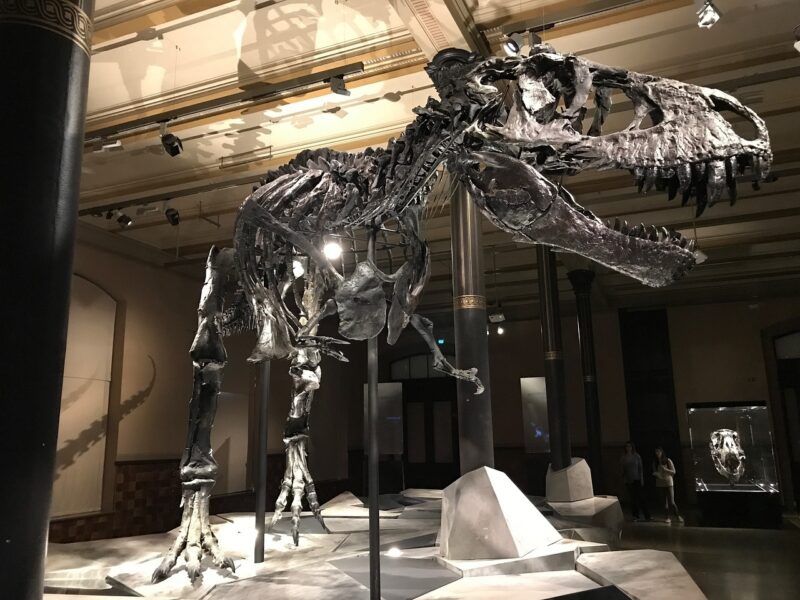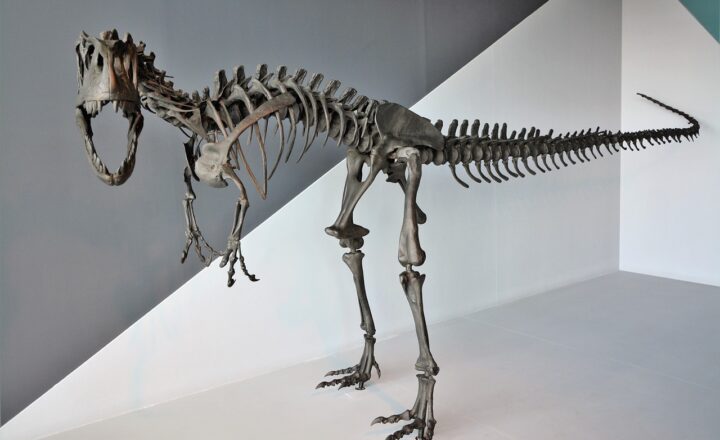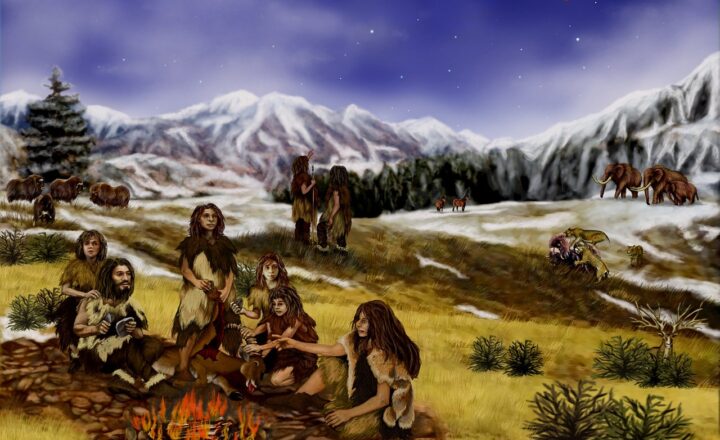Fossil Mysteries: What Dinosaur Skeletons Tell Us About Ancient Ecosystems
November 14, 2024

The study of dinosaur skeletons is not just an investigation into the lives of these ancient creatures, but also a window into the ecosystems of the past. Fossilized bones and teeth, preserved in sedimentary rock, enable paleontologists to reconstruct the environments that dinosaurs inhabited and the ecological dynamics that governed them. This article delves into the information that dinosaur skeletons reveal about ancient ecosystems, the significance of these organisms in their environments, and the methods used to interpret fossils.
1. Overview of Dinosaur Fossilization
To understand what dinosaur skeletons tell us, it’s essential to grasp the fossilization process. Fossils form when organic materials are buried under sediment and over time, minerals infiltrate and replace organic components. This process can lead to the formation of both bone fossils and trace fossils, like footprints, which give insight into the behavior patterns of dinosaurs. The conditions necessary for fossilization are specific and must include rapid burial in a low-oxygen environment which slows down decay and allows for the preservation of skeletal structures.
As we study these fossils, several questions arise regarding:
- What types of environments did dinosaurs live in?
- How did these organisms interact with one another?
- What were their diets and predatory behavior?
The clues left behind by these ancient bones are invaluable in constructing the narratives of Earth’s past ecosystems.
2. Understanding Dinosaur Ecosystems
Fossils provide direct evidence of the types of organisms that coexisted within an ecosystem. By examining the skeletal remains of dinosaurs, along with the flora and other fauna recovered from the same geological formations, researchers can infer a great deal about these ancient environments.
Dinosaur skeletons, paired with fossilized plants, enable paleontologists to deduce:
- Vegetation Types: The presence of certain plant species alongside dinosaur fossils can reveal whether the habitat was a lush forest, open plains, or arid region. For example, a rich diversity of ferns and cycads suggests a warm, moist climate, preferable to herbivorous dinosaurs.
- Trophic Relationships: By studying the dental patterns of herbivorous dinosaurs and the skeletal structures of carnivores, researchers can understand predator-prey dynamics and how these relationships shaped the ecosystems. For instance, the size and structure of teeth can indicate dietary preferences, whether a dinosaur was a carnivore, herbivore, or omnivore.
- Mobility and Migration Patterns: Fossilized footprints or trackways provide information about the movement patterns of dinosaurs, aiding in reconstructing their migratory habits and territorial behaviors. Trackways can reveal if certain dinosaurs traveled in herds, which could inform social structures or reproductive strategies.
By piecing together such evidence, scientists can recreate a picture of how these ancient environments functioned.
3. Case Studies: Famous Dinosaurs and Their Ecosystems
Several discoveries have shed light on how different dinosaur species interacted with their ecosystems. Here are a few illustrative case studies:
a. Tyrannosaurus rex & the Late Cretaceous Ecosystem
The T. rex, one of the most famous carnivores, existed during the Late Cretaceous period. Fossil evidence suggests that it occupied a varied habitat, including forested areas and open plains. The discovery of its fossilized remains alongside those of large herbivores like Triceratops provides insights into predator-prey dynamics. The skeletal structure of T. rex, with its powerful jaws and sharp teeth, indicates its role as an apex predator in its ecosystem.
b. Stegosaurus & the Jurassic Ecosystem
The Stegosaurus, a prominent herbivore of the Jurassic period, had unique features that offer insight into its feeding behavior and habitat. Its small head in relation to its body size suggests it was a browser, feeding on low-lying vegetation. The fossilized remains of Stegosaurus found in temperate regions with cycads and ferns indicate a habitat rich in plant life, demonstrating the close relationship between dinosaur evolution and environmental conditions.
c. Velociraptor & the Late Cretaceous Predatory Guild
The Velociraptor, often depicted as a social predator, thrived in the Late Cretaceous ecosystems characterized by diverse flora. The discovery of its fossils alongside various herbivorous species and other predatory dinosaurs suggests a complex ecosystem where these species coexisted. Evidence from fossilized claw marks and hunting behaviors inferred from the skeletal structure highlights the Velociraptor’s role in this ecosystem as a pack hunter, likely preying on smaller dinosaurs.
4. The Role of Environmental Changes in Dinosaur Extinction
Understanding ancient ecosystems is vital to comprehending the eventual extinction of dinosaurs approximately 65 million years ago. Research indicates that a series of environmental changes, including significant volcanic activity, temperature fluctuations, and the impact of the Chicxulub asteroid, drastically altered habitats where dinosaurs lived. The resulting changes in food availability, coupled with competition from surviving species, may have contributed to the decline and extinction of this fascinating group of animals.
The fossil record shows a gradual shift in biodiversity prior to the extinction event, indicating that some dinosaurs were already struggling in response to these environmental changes. The study of fossilized remains thus aids in understanding the fragility of ecosystems and how complex ecological interactions can be disrupted.
5. Conclusion: Unlocking the Mysteries of the Past
Dinosaur skeletons tell us more than merely the existence of these magnificent creatures; they provide a detailed account of ancient ecosystems, interactions among species, and the environmental dynamics of their time. As paleontologists uncover more fossils, our understanding of these ecosystems continues to evolve. Each discovery brings us closer to comprehending how dinosaurs lived, interacted, and ultimately adapted to the changing world around them.
By piecing together the evidence provided by fossilized remains, we gain insights not just into the past of Earth, but into the principles of ecology that remain relevant in understanding modern ecosystems as well.
In the quest to solve the fossil mysteries of ancient ecosystems, the work of paleontologists is crucial in bridging knowledge from the past and applying it to current environmental issues, enriching our understanding of life on Earth.







